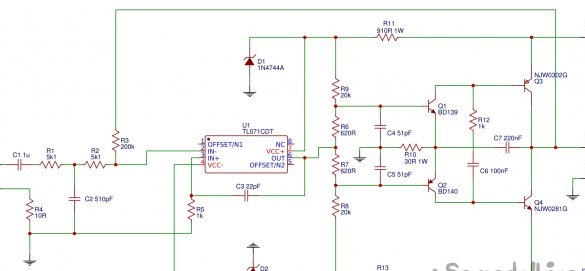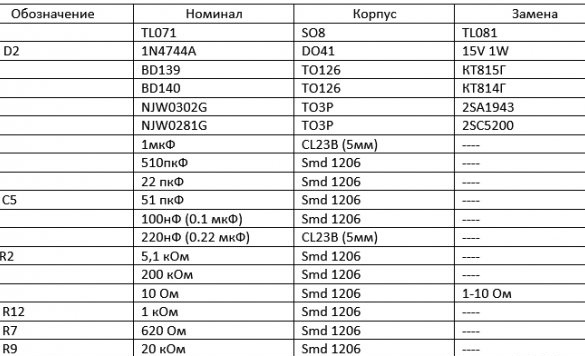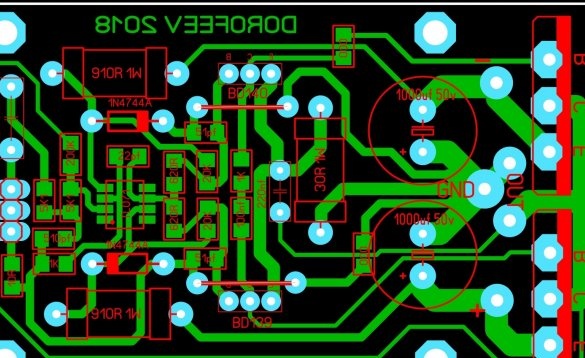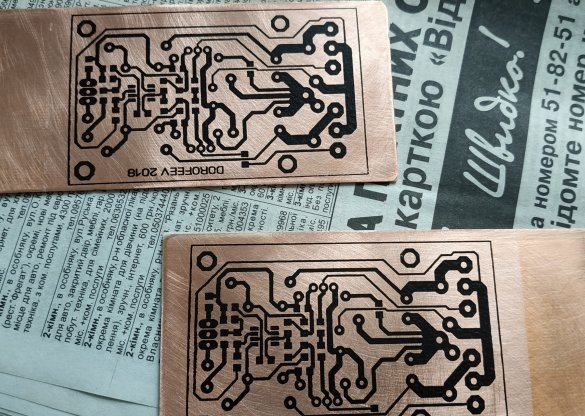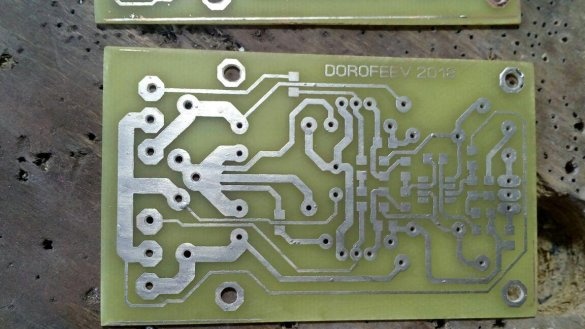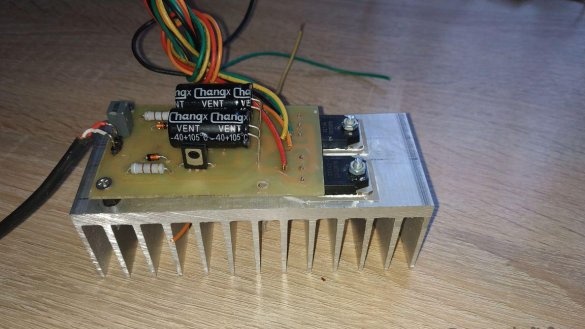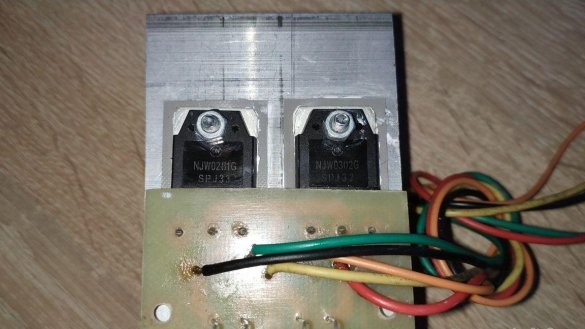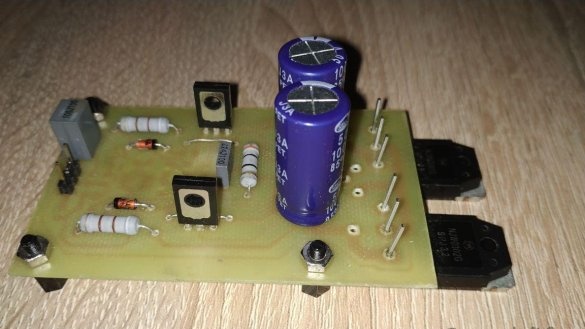I am glad to present to your attention the time-tested scheme of the audio frequency amplifier according to the Dorofeev scheme made on one operational amplifier and four transistors.
The scheme is very simple, it does not require any configuration, it starts working immediately after assembly and is even affordable for beginner hams. Despite its simplicity, the amplifier has a fairly high-quality sound and an output power of about 50 watts, which is more than enough for a living room. This circuit operates in Class B, and was first published in Radio magazine, issue No. 3 for 1991 under the heading Mode B in AF power amplifiers.
As you can see, the circuit is really very simple, but it is built on a domestic element base, which is now not so easy to find, there are many options and modifications of this amplifier on the Internet, for example, it has been converted to a modern base and slightly modernized, also a similar one was presented on this site scheme "DIY 50W Transistor Amplifier”, But unlike it, our board will mainly consist of smd components, which will allow us to mount the board entirely on a radiator and assemble a more compact amplifier based on a modern element base. To power the amplifier, you need a power supply with an output bipolar voltage of 25 volts per shoulder and a power of 100-150 watts. The circuit of our amplifier will look like this:
As you can see, the circuit does not contain expensive and scarce components, all of them can be bought in almost every radio store, or radio market. The operational amplifier in our version will be TL071 (you can put TL081) in the SO8 package, pre-output transistors are a common complementary pair of BD139 / BD140, NJW0302 / NJW0281 will be used as output transistors (you can put a “people's” pair 2SC5200 / 2SA194344), the zener diode replace by any one with a stabilization voltage of 15 volts and a dissipation power of at least 1 Watt. With this circuitry and a supply voltage of +/- 25 volts (bipolar), you can remove about 50 watts per load of 4 Ohms.You can raise the supply voltage to 30-36 volts per lecho and remove at the same time more than 100 watts per channel, but for this you need to replace two one-watt resistors with a nominal value of 910 Ohms with the same power, with a nominal value of 2 kilo ohms, all smd components are made in a 1206 case, output capacitors - film.
For assembly we need:
First we need to make a fee. I do it using the method Laser Ironing Technology (LUT), the layout of my authorship board looks like this (download the board in lay format):
We print the board pattern onto the thermal transfer paper and transfer it to fiberglass using a conventional iron:
Then we poison it in ferric chloride (or in a solution of hydrogen peroxide, salt and citric acid), drill holes and poke tracks (I personally puddle in the Rose alloy in boiling water with citric acid added), and we get such beauty:
As for me, the board is not badly divorced, because when the amplifier is working, there is absolutely no background and interference
Next, we solder the smd components first, and then all the output ones, from smaller to large for ease of soldering. After soldering the washing flux we get the following result:
After that, you can try turning on the amplifier to check the operability, since the output transistors are not yet installed on the radiator, you need to turn on the device for no more than one minute and apply a low volume music signal to the input, or simply touch the input with your finger. If everything is assembled correctly, then the amplifier will immediately start working and music should play in the dynamics, or the background from your fingers, if this is not the case, you need to make sure that all components are installed correctly, and in the absence of random jumpers between tracks from solder droplets, you should also pay attention on the correct installation of zener diodes, and transistors, and also the correct polarity of electrolytic capacitors. Next, you need to install the board on the radiators, first we mark the places for the holes, punch and drill with a 2.5 mm drill, then we drop a couple of drops of engine oil into each hole and use the M3 tap to screw the thread. There is enough excess radiator data, and even at maximum power, the radiators do not heat up much (no more than 35-40 degrees)
The output transistors must be isolated from the radiator using insulating gaskets with thermal paste:
After assembly, you can proceed to full testing and listening. The circuit showed a good result, good sound, and reliability.
Enjoy your homemade!



